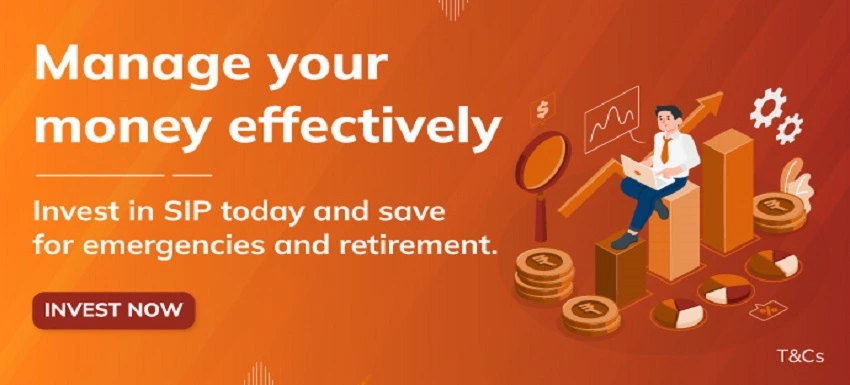THE
ORANGE
HUB
How To Choose Investments For Short-Term Goals

Investments are crucial for securing the future and achieving financial freedom. While many prefer long-term investing as a better strategy, you might want to save money for your short-term goals as well, like buying a car, paying off a debt or going on a vacation in the next few months or years. Short-term investment plans are meant for shorter periods, typically ranging from a few days to a few months.
The ultimate goal of short-term investments is to secure quick returns, making them suitable for investors who do not want to lock their capital for long periods. They often range from Savings Accounts and Fixed Deposits to SIPs (Systematic Investment Plans) and liquid funds.
What is a short-time investment?
Any capital investment for a short period is considered a short-time investment. You invest your money to achieve small goals in the near future. For instance, one can plan to buy a new car with a short-term investment. When choosing a short-term investment plan, ideally aim at two primary objectives: Return on capital and safety of capital.
Features of a short-term investment plan
Many people prefer short-term investment plans for the following features:
Liquidity: Short-term investment plans have a higher level of liquidity. That means you can swiftly liquidate and convert them into cash.
Tenure: Short-time investment strategies have a shorter term, often ranging from a few days to a few months. The phrase ‘short-term’ itself refers to the short investment duration.
Risk: Since they are relevant for a short duration, they often have a lower risk than long-term investment plans.
Returns: Although returns on short-term investments are lower than long-term plans, many provide excellent returns.
Benefits of investing in a short-term investment plan
As an investor, you can achieve numerous benefits by investing in a short-term investment plan:
Flexibility: The shorter term of these investment strategies provides the flexibility to invest money for short periods and gather returns in a timeframe suitable to your needs.
Accessibility: Since numerous short-term investment options are available, you can choose one that aligns with your financial goals.
Security: Short-term investment instruments deliver high returns with minimal risk involved, making them safe for investors with a low-risk appetite.
Common short-term investment plans
Overview of some common short-time investment plans:
Savings and Money Market Accounts
These are the most common types of short-term investment plans. Depositing money into these accounts earns interest over time. Although the interest earnings are lower than other investment instruments, your capital remains safe with no risk of loss.
Recurring and Fixed Deposits
A Fixed Deposit (FD) requires you to deposit a lumpsum amount for a pre-determined period. In a Recurring Deposit (RD) Account, you must deposit a fixed amount regularly. These plans lock your money for a specific tenure and pay a rate of interest. At maturity, you receive the principal amount with accumulated interest. Some FDs also deposit interest into your Savings Account each month to give you a steady income source.
Debt Funds
These Mutual Funds invest capital in debt securities like government securities, corporate bonds, treasury bills and similar money market instruments. As they pay interest to appreciate your capital over time, you can buy or sell them at any time, thanks to their high liquidity. If you are unwilling to invest in lumpsum, you can buy them gradually through SIPs.
Equity Funds
These Mutual Funds primarily invest in stocks. You may invest in short-term equity funds to earn high returns at par with short-term stock market movements. However, they carry a higher risk due to market exposure. You can also invest in equity funds through SIPs.
To summarise, a short-term investment plan puts your money to work by lending it to others or taking ownership positions. The corpus you build depends on the interest you earn with the plan. However, since all investment options come with a risk, you must understand your financial goals and risk tolerance before choosing a short-term investment plan.
Steps to invest in a short-term investment plan
These steps summarise the process of investing in a short-term plan:
Identify your investment goals and decide the duration for which you want to invest
Based on your financial goals, choose an investment plan that aligns with your requirements and expectations
Fill out an application form to put your money in an investment plan
Submit the necessary documents
Invest as per the plan terms
Things to consider while choosing a short-term investment plan
Consider these factors before investing in an investment plan:
Investment objectives: Identifying your investment objectives is crucial. Decide whether you are saving money for specific goals or you want to build wealth over time.
Risk tolerance: Your risk appetite largely affects the investment plan you choose.
Return on investment: While short-time investment plans deliver smaller returns, you can choose them adequately to build a corpus.
Liquidity needs: If you need the invested amount before maturity, an investment plan with high liquidity will be ideal.
Market conditions: Research and understand the current market conditions before investing. They can impact your investment returns, especially when investing in a market-linked investment plan.
In conclusion, short-term investment is a viable option if you are looking for a low-risk, flexible option with good returns. Now that you understand these investment plans and what to consider before investing, make informed decisions that best suit your financial goals.
Scroll to top











